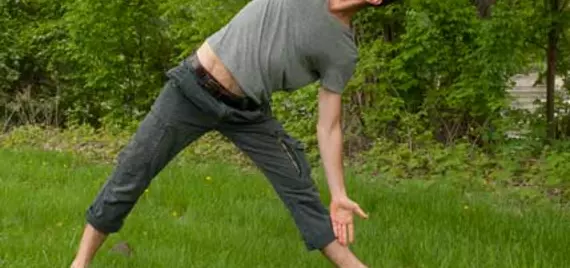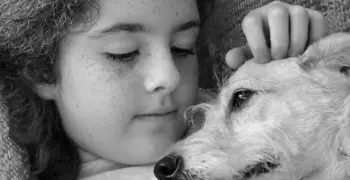How Does Nature Impact Our Wellbeing?
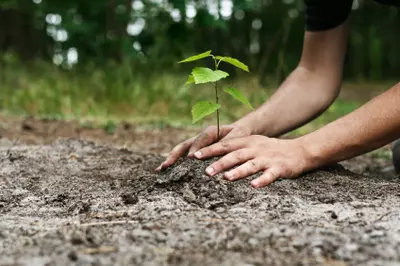
Research reveals that environments can increase or reduce our stress, which in turn impacts our bodies. What you are seeing, hearing, experiencing at any moment is changing not only your mood, but how your nervous, endocrine, and immune systems are working.
The stress of an unpleasant environment can cause you to feel anxious, or sad, or helpless. This in turn elevates your blood pressure, heart rate, and muscle tension and suppresses your immune system. A pleasing environment reverses that.
And regardless of age or culture, humans find nature pleasing. In one study cited in the book Healing Gardens, researchers found that more than two-thirds of people choose a natural setting to retreat to when stressed.
Nature heals
Being in nature, or even viewing scenes of nature, reduces anger, fear, and stress and increases pleasant feelings. Exposure to nature not only makes you feel better emotionally, it contributes to your physical wellbeing, reducing blood pressure, heart rate, muscle tension, and the production of stress hormones. It may even reduce mortality, according to scientists such as public health researchers Stamatakis and Mitchell.
Research done in hospitals, offices, and schools has found that even a simple plant in a room can have a significant impact on stress and anxiety.
Nature soothes

In addition, nature helps us cope with pain. Because we are genetically programmed to find trees, plants, water, and other nature elements engrossing, we are absorbed by nature scenes and distracted from our pain and discomfort.
This is nicely demonstrated in a now classic study of patients who underwent gallbladder surgery; half had a view of trees and half had a view of a wall. According to the physician who conducted the study, Robert Ulrich, the patients with the view of trees tolerated pain better, appeared to nurses to have fewer negative effects, and spent less time in a hospital. More recent studies have shown similar results with scenes from nature and plants in hospital rooms.
Nature restores
One of the most intriguing areas of current research is the impact of nature on general wellbeing. In one study in Mind, 95% of those interviewed said their mood improved after spending time outside, changing from depressed, stressed, and anxious to more calm and balanced. Other studies by Ulrich, Kim, and Cervinka show that time in nature or scenes of nature are associated with a positive mood, and psychological wellbeing, meaningfulness, and vitality.
Furthermore, time in nature or viewing nature scenes increases our ability to pay attention. Because humans find nature inherently interesting, we can naturally focus on what we are experiencing out in nature. This also provides a respite for our overactive minds, refreshing us for new tasks.
In another interesting area, Andrea Taylor’s research on children with ADHD shows that time spent in nature increases their attention span later.

Real-life examples of people helped by nature
Nature helped Cheryl, Terry, and James recover from depression and stress and get a new perspective on their lives.
Real-Life Examples of People Helped by Nature

After months fruitlessly searching for a job after graduation, Cheryl was losing confidence in herself. Seeing she was depressed, her parents gifted her with two weeks of wilderness training. Cheryl returned a new person.
Of her experience, she said, “I learned the depth of my strength and how much I could accomplish. My courage surprised me…Being surrounded by nature reminded me to keep the Big Picture in mind not only during my wilderness experience, but also when I returned home. Life is in front of me and I have lots of options.”
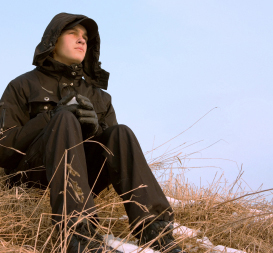 Terry was suffering from one of the most powerful bouts of depression in his life. His therapist chose an unconventional treatment and sent Terry to his farm, located several miles outside city limits.
Terry was suffering from one of the most powerful bouts of depression in his life. His therapist chose an unconventional treatment and sent Terry to his farm, located several miles outside city limits.
It was winter, and Terry noticed the way the wind slapped him in the face when he got out of his truck. Snow covered the flat land as far as the horizon line. Terry’s boots sank into the snow as he walked. He settled beside a frozen pond and noticed that the sensory input from his surroundings—the frigid wind, the blinding snow—had distracted him from his own depressed mental chatter.
Sitting next to the pond, he began to think about what lay underneath the ice. The fish and frogs and larvae that normally thrived under the water were all sleeping, he realized. As the snow began to fall on his own body, he realized that he was not separate from the sleeping animals and organisms below the surface of the pond. “I realized that my depression is like the snow,” he said. “It covers everything in me, and it’s like my heart has gone to sleep…but I’m not dead inside. I’m resting.”
 At fifty, James was beginning to feel the effects of working sixty hours a week, rarely exercising, and eating lunch at his desk. He was overweight, had high blood pressure, and always felt tired. On the advice of his doctor, James began a green exercise program with a local community group that walked through the countryside on Saturdays.
At fifty, James was beginning to feel the effects of working sixty hours a week, rarely exercising, and eating lunch at his desk. He was overweight, had high blood pressure, and always felt tired. On the advice of his doctor, James began a green exercise program with a local community group that walked through the countryside on Saturdays.
James was awed by the natural display of the trees and the quiet hum of wildlife along the hiking trails. The group gradually began jogging and rock climbing. Within a few months, James’s blood pressure had decreased, he had lost several pounds, and he had more energy. “Just by spending time outdoors each week I felt rejuvenated and relaxed when I came into the office on Monday,” he said.
Stories adapted from The Healing Earth and Nature-Guided Therapy.
Nature connects
According to a series of field studies conducted by Kuo and Coley at the Human-Environment Research Lab, time spent in nature connects us to each other and the larger world. Another study at the University of Illinois suggests that residents in Chicago public housing who had trees and green space around their building reported knowing more people, having stronger feelings of unity with neighbors, being more concerned with helping and supporting each other, and having stronger feelings of belonging than tenants in buildings without trees. In addition to this greater sense of community, they had a reduced risk of street crime, lower levels of violence and aggression between domestic partners, and a better capacity to cope with life’s demands, especially the stresses of living in poverty.
This experience of connection may be explained by studies that used fMRI to measure brain activity. When participants viewed nature scenes, the parts of the brain associated with empathy and love lit up, but when they viewed urban scenes, the parts of the brain associated with fear and anxiety were activated. It appears as though nature inspires feelings that connect us to each other and our environment.
Too much time in front of screens is deadly
“Nature deprivation,” a lack of time in the natural world, largely due to hours spent in front of TV or computer screens, has been associated, unsurprisingly, with depression. More unexpected are studies by Weinstein and others that associate screen time with loss of empathy and lack of altruism.
And the risks are even higher than depression and isolation. In a 2011 study published in the Journal of the American College of Cardiology, time in front of a screen was associated with a higher risk of death, and that was independent of physical activity!

Breaking an addiction to technology
Kelly McGonigal, author of The Willpower Instinct, shares tips for breaking an addiction to texting, emailing, and social media.
Limit your children's screen time
The Mayo Clinic recommends limiting children's exposure to screens—including computers, televison, hand-held devices, and video games—to two hours per day. More than that can have serious consequences, including obesity, behavioral problems, irregular sleep, violent tendencies, poor academic performance, and dampened creativity.
Instead, encourage your child to engage with nature, whether that's playing an outdoor sport, reading next to a window, or taking a walk around the block.
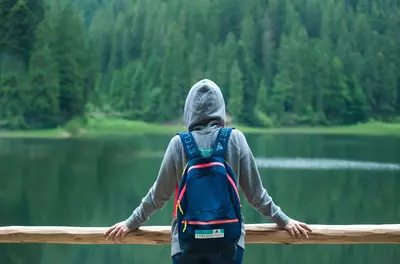
Learn more in this webinar
In this free webinar, Dr. Jean Larson, director of nature-based therapeutics at the Bakken Center and the Minnesota Landscape Arboretum, introduces the rationale, evidence, and benefits of Nature-Based Therapeutics and explains the critical role of nature in self-care, community-building, and planetary health.
Berman, M. G., Jonides, J., & Kaplan, S. (2008). The cognitive benefits of interacting with nature. Psychological Science, 19(12), 1207-1212.
Bowler, D. E., Buyung-Ali, L. M., Knight, T. M., & Pullin, A. S. (2010). A systematic review of evidence for the added benefits to health of exposure to natural environments. BMC Public Health, 10, 456.
Bringslimark, T., Patil, G., & Hartig, T. (2008). The Association Between Indoor Plants, Stress, Productivity And Sick Leave In Office Workers. Acta Horticulturae, 775, 117.
Cervinka, R., Röderer, K., & Hefler, E. (2012). Are nature lovers happy? On various indicators of well-being and connectedness with nature. Journal of Health Psychology, 17(3), 379-388.
Coley, R., Kuo, F. E., & Sullivan, W. C. (1997). Where does community grow? The social context created by nature in urban public housing. Environment and Behavior, 29(4), 468.
Devries, S. (2003). Natural environments -- healthy environments? An exploratory analysis of the relationship between greenspace and health. Environment and Planning, 35(10), 1717.
Diette, G. B., Lechtzin, N., Haponik, E., Devrotes, A., & Rubin, H. R. (2003). Distraction therapy with nature sights and sounds reduces pain during flexible bronchoscopy: A complementary approach to routine analgesia. Chest, 123(3), 941-948.
Dijkstra, K., Pieterse, M., & Pruyn, A. (2006). Physical environmental stimuli that turn healthcare facilities into healing environments through psychologically mediated effects: Systematic review. Journal of Advanced Nursing, 56(2), 166-181.
Hartig, T. (1991). Restorative effects of natural environment experiences. Environment and Behavior, 23, 3.
Hu, Z. (2008). Linking stroke mortality with air pollution, income, and greenness in northwest florida: An ecological geographical study. International Journal of Health Geographics, 7, 1.
Kim, T. (2010). Human brain activation in response to visual stimulation with rural and urban scenery pictures: A functional magnetic resonance imaging study Science of the Total Environment, 408(12), 2600.
Kuo, F. (2001). Aggression and violence in the inner city: Effects of environment via mental fatigue. Environment and Behavior, 33(4), 543.
Largo-Wight, E., Chen, W. W., Dodd, V., & Weiler, R. (2011). Healthy workplaces: The effects of nature contact at work on employee stress and health. Public Health Reports (Washington, D.C.: 1974), 126 Suppl 1, 124-130.
Lohr, V. (2007). Benefits of nature: What we are learning about why people respond to nature. J. Physiol Anthropol: 26(2), 83.
Marcus, C., & Barnes, M. (eds). (1999). Healing gardens ( Trans.). New York, NY: John Wiley and Sons.
Mind Organization. (2007). Ecotherapy: The green agenda for mental health. UK: Mind Publications.
Mitchell, R., & Popham, F. (2008). Effect of exposure to natural environment on health inequalities: An observational population study. Lancet, 372(9650), 1655-1660.
Morrison, C., & Gore, H. (2010). Relationship between excessive internet use and depression: A questionnaire-based study of 1,319 young people and adults. Psychopathology, 43(2), 121-126.
Park, S., & Mattson, R. (2009). Ornamental indoor plants in hospital rooms enhanced health outcomes of patients recovering from surgery. Journal of Alternative & Complementary Medicine, 15(9), 975-980.
Raudenbush, B, et al. (2001). Enhancing athletic performance through the administration of peppermint odor. J Sport Exerc Psychol; 23:156–60.
Stamatakis, E. (2011). Screen-based entertainment time, all-cause mortality, and cardiovascular events: Population-based study with ongoing mortality and hospital events follow-up. Journal of the American College of Cardiology, 57(3), 292-299.
Selub, E., Logan, A. (2012). Your brain on nature. Mississauga, Ontario: Wiley.
Shepley, M. Gerbi, R., Watson, A. Imgrund, S. Patient and staff environments: The impact of daylight and windows on ICU patients and staff. World Health Design. Accessed May 11, 2013 at http://www.worldhealthdesign.com/Patient-and-staff-environments.aspx
Taylor, A., Kuo, F. (2008). Children with attention deficits concentrate better after walk in the park. Journal of Attention Disorders; 12 (5), 402-09.
Ulrich, R. S. (1984). View through a window may influence recovery from surgery. Science, 224(4647), 420-421.
Ulrich, R. S., Simons, R. F., Losito, B. D., Fiorito, E., Miles, M. A., & Zelson, M. (1991). Stress recovery during exposure to natural and urban environments. Journal of Environmental Psychology, 11(3), 201-230.
Weinstein, N. (2009). Can nature make us more caring? Effects of immersion in nature on intrinsic aspirations and generosity. Personality and Social Psychology Bulletin, 35, 1315.
